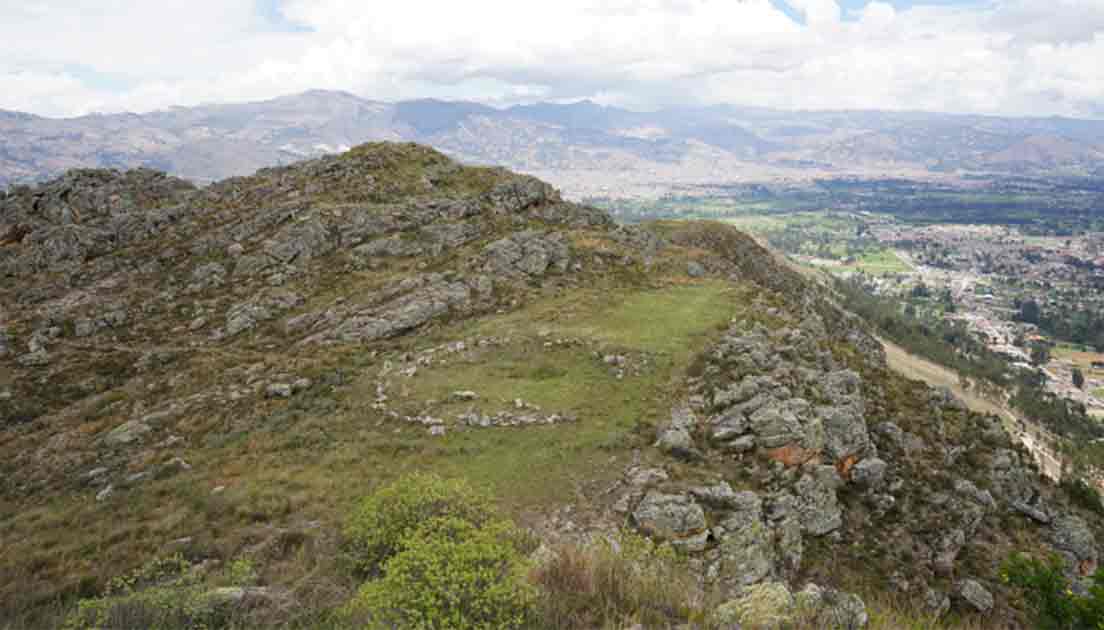4700-year-old Megalithic Circle Discovered in the High Andes of Peru
Archaeologists have discovered a prehistoric plaza high in the Andes, known as Callacpuma stone plaza, was built nearly 5,000 years ago by ancient nomadic groups. At an elevation exceeding 3,000 meters (9850 feet) above sea level, this significant finding is a unique structure of a stone circle, where offerings were made to long-forgotten gods over several millennia. The construction features large megalithic stones arranged in two concentric circles, each 18 meters (60 feet) in diameter, creating a ceremonial space filled with untold secrets from the era when hunter-gatherers in what is now Peru started to form more complex societies.
- The Dramatic Life and Death of Atahualpa, the Last Emperor of the Inca Empire
- Lost for 2 700 years: Tomb of the Serpent Jaguar Priests Uncovered in Peru
Ancient Messages at Callacpuma Archaeological Site
Located in the Cajamarca River basin in northern Peru, famous as the location where the Spanish conquistador, Pizarro, captured Inca Atahualpa, the Callacpuma archaeological site has been recognized for 60 years, notable for its over one hundred cave paintings that depict a range of subjects from geometric patterns to natural scenes. The site, which is partially enclosed by an Inca road, spans 250 hectares and includes agricultural terraces, domestic buildings spread far apart, and a complex system of caves.
- The Battle of Cajamarca – The Conquest of the Spanish and the End of the Inca Empire
- 5,500-year-old ceremonial center and circular pyramid discovered in Peru

Two of the entrances to the cave system at Callacpuma which is the home to many examples of rock art. Inset; Rock art found at the site. (Jycamposh/CC BY-SA 4.0, Inset; Visita Cajamarca)
Recording the Stone Circle
Systematic study of the site began in 2015, leading to the documentation of the circular plaza, which has recently been dated to over 4,700 years ago through carbon analysis. This places the plaza as one of the earliest known megalithic constructions in the region, predating similar structures such as Stonehenge by nearly two millennia.
Jason L. Toohey, an anthropologist at the University of Wyoming and lead author of the study published in the journal Science Advances, suggests that the plaza represents one of the earliest monumental constructions north of the Andes.
The plaza, a key feature of the late preceramic period, illustrates a crucial transitional time in South America when coastal fishing communities began trading with emerging agricultural societies in the mountains. It exemplifies monumental architecture constructed before the full adoption of agriculture and permanent settlements.

Excavation of the stone circle at Callacpuma. (Jason Toohey/Science Advances)
A Well-Prepared Ritual Arena
Excavations revealed two entrances to the plaza, with one entrance partially obscured by a large stone block from the second circle, suggesting controlled access to the interior. Before erecting the walls, the builders had prepared the ground with a mixture of clay, soil, gravel, and charcoal, with the dated samples coming from charred wood remnants from this foundation layer, reports the study.

One of the entrances to the plaza. (Jason Toohey/Science Advances)
The site raises questions about the motivations behind dedicating significant resources to build such structures, their function, and the rituals that might have taken place there. Additional findings at the site include fragments of ceramic cups and bowls, quartz crystals, and an unworked lapis lazuli gem, indicating the site's continued use and importance even after the local populations had mastered pottery.
Recent artifacts, made from soft kaolin clay and dating to the Layzón period (500-200 BC), suggest periodic visits to the stone circle until it was ceremonially sealed for unknown reasons during the same period. The construction of such ritual sites by semi-nomadic peoples reflects a shift in belief systems, emphasizing collective actions and regional cooperation.
The research team, including Melissa S. Murphy and Sarah G. Stagg from the University of Wyoming, Patricia Chirinos Ogata from the University of California, and Alex García-Putnam from the University of New Hampshire, led by Toohey, plans to use ground-penetrating radar and drone-captured infrared images to uncover more about the many mysteries of Callacpuma Plaza.
Top image: Arial photo of the Callacpuma plaza, with the stone circle at the center. Source: Toohey et al./Science Advances
By Gary Manners
References
Toohey, J et al. 2024, A monumental stone plaza at 4750 B.P. in the Cajamarca Valley of Peru. Science Advances. Available at: DOI: 10.1126/sciadv.adl0572

















